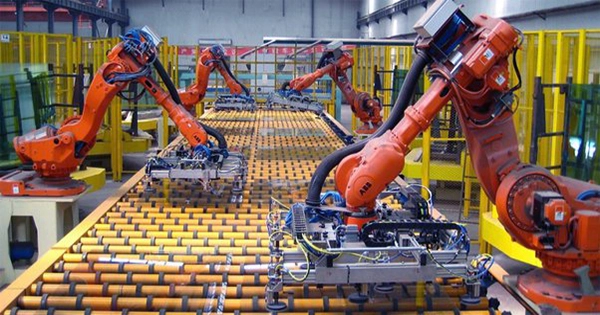Any artificial machine or gadget created to perform a useful task is a robot. It is a “mechanical or virtual intelligent agent that can do activities automatically or with instruction, generally by remote control,” according to one of its definitions. It is a pretty broad term.
Robot: Anything might be a robot because the term “robot” is so broad. It’s interesting to note that the first robots, like androids, were intended to resemble humans. Robots are androids in general.
Anything can be a robot, including a humanoid robot or android with artificial intelligence, an industrial robot used in an assembly line, and hobby toy robots. A robot with a striking resemblance to a human being is called an Android.
C3PO from Star Wars, Data from Star Trek, and the androids from Blade Runner are some examples of robots and androids.
Anything mechanical with a CPU is a robot. They may be considered the mechanical equivalent of indoctrinated zombies.
Cyborgs: A “cyborg,” short for “cybernetic organism,” is a synthetic entity made up of both biological and robotic mechanical components. A cyborg can take any shape, whether human or otherwise. Android is another term for a cyborg that takes on human form. A cyborg is a hybrid of a mechanical and biological entity; an example would be a human with robotic parts.
Androids: A robot that mimics a human being is called an android. Arnold and Data are both androids.
Any technology can be used to create Android. It may be partially organic or wholly mechanical, like Data from Star Trek (which makes it a cyborg).
As always, a particular science fiction author is free to use any terminology, whether knowingly or not. R2-D2 from Star Wars is an example of a droid, which is short for “Android,” despite looking like a post office box.
Cyborg and Android cannot coexist. While Androids are entirely mechanical, cyborgs typically consist of biological humans who have been technologically enhanced.
A cyborg has some organic components. Consequently, a cyborg is a human with grafted cybernetic components. Like Commander Data, The Terminator is a robot through and through; he is not a cyborg. Given that it is constructed on a biological human frame, Robocop is a cyborg.
Despite being called a “droid,” R2D2 is not an android. He is whatever the Greek word is for “trash can.”
Droids are mechanical robots with self-aware artificial intelligence, like C3PO, R2-D2, and other characters from Star Wars.
Cyborg vs Robot: Cyborgs and robots look like something out of science fiction, and in some ways, they do. The majority of people are unaware that cyborgs and robots can take on other forms from those they see in movies. The existence of life distinguishes cyborgs from robots as their main distinction. A robot is essentially a sophisticated machine. It can communicate with people and is frequently automated. Cyborgs, in contrast, are a hybrid of a machine and a living being. It doesn’t have to be a person; it may be a dog, a bird, or anything else that lives.
A cyborg is different from a robot since it has a life component. This basically suggests that in contrast to robots, cyborgs are alive. Despite the fact that certain robots can mimic some elements of biological things, they can never fully be alive. A robot can only carry out the tasks that were preprogrammed, whereas cyborgs, particularly human cyborgs, have free will over their actions.
Examples: There are some excellent instances of robots. Robots that do monotonous duties in manufacturing are one of them. Because they are extremely swift and never grow weary, these robots are superior to humans at certain tasks.
Despite the fact that you might not conceive of cyborgs as persons, they do indeed exist. Cyborgs are typically those who have robotic prosthetic limbs. Even those who have pacemakers qualify since their ability to live depends in part on the continued operation of the machine that regulates their heartbeat. The sophistication of the robots and cyborgs is another difference. Robots, like the industry robots discussed above, can be quite complicated. But there are also pretty straightforward robots. Young children can access straightforward robotic kits that will pique their curiosity and explain the fundamental concepts of robotics.
In contrast, a cyborg’s machine component is frequently quite sophisticated since it interacts with the organic component to function. Some prosthetic arms can do many of the same tasks as a natural limb, and some users can even reach out and pick up objects.












